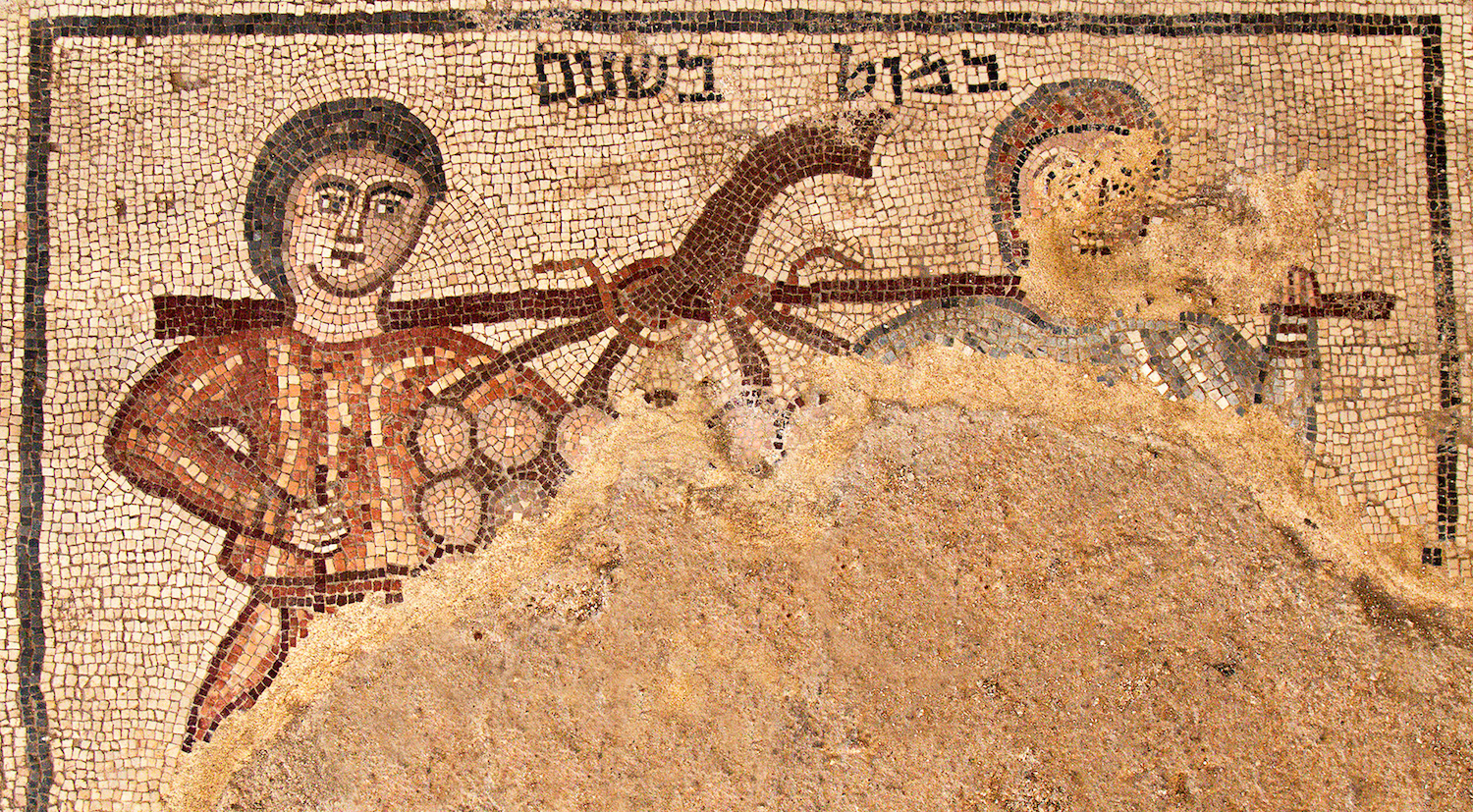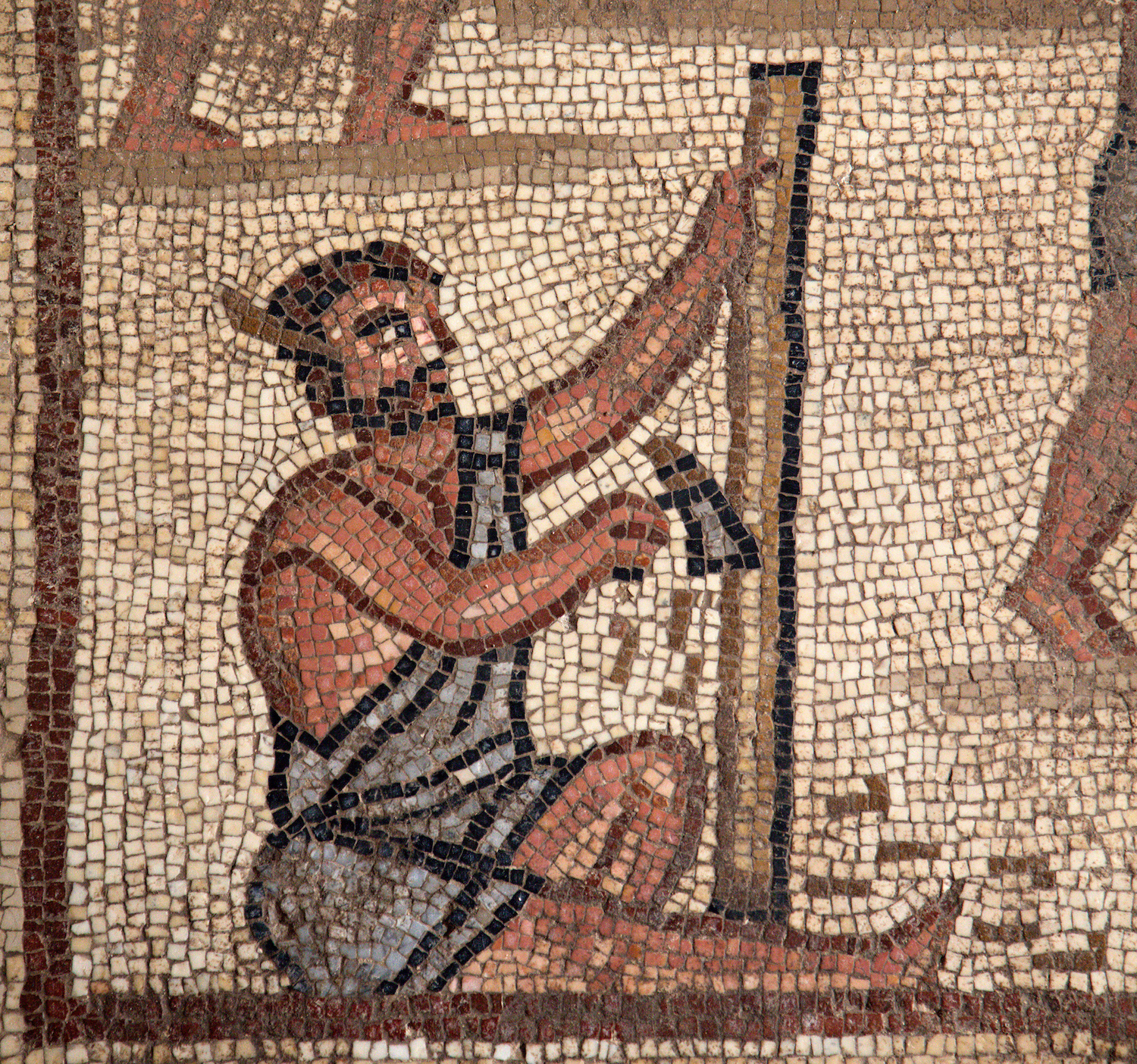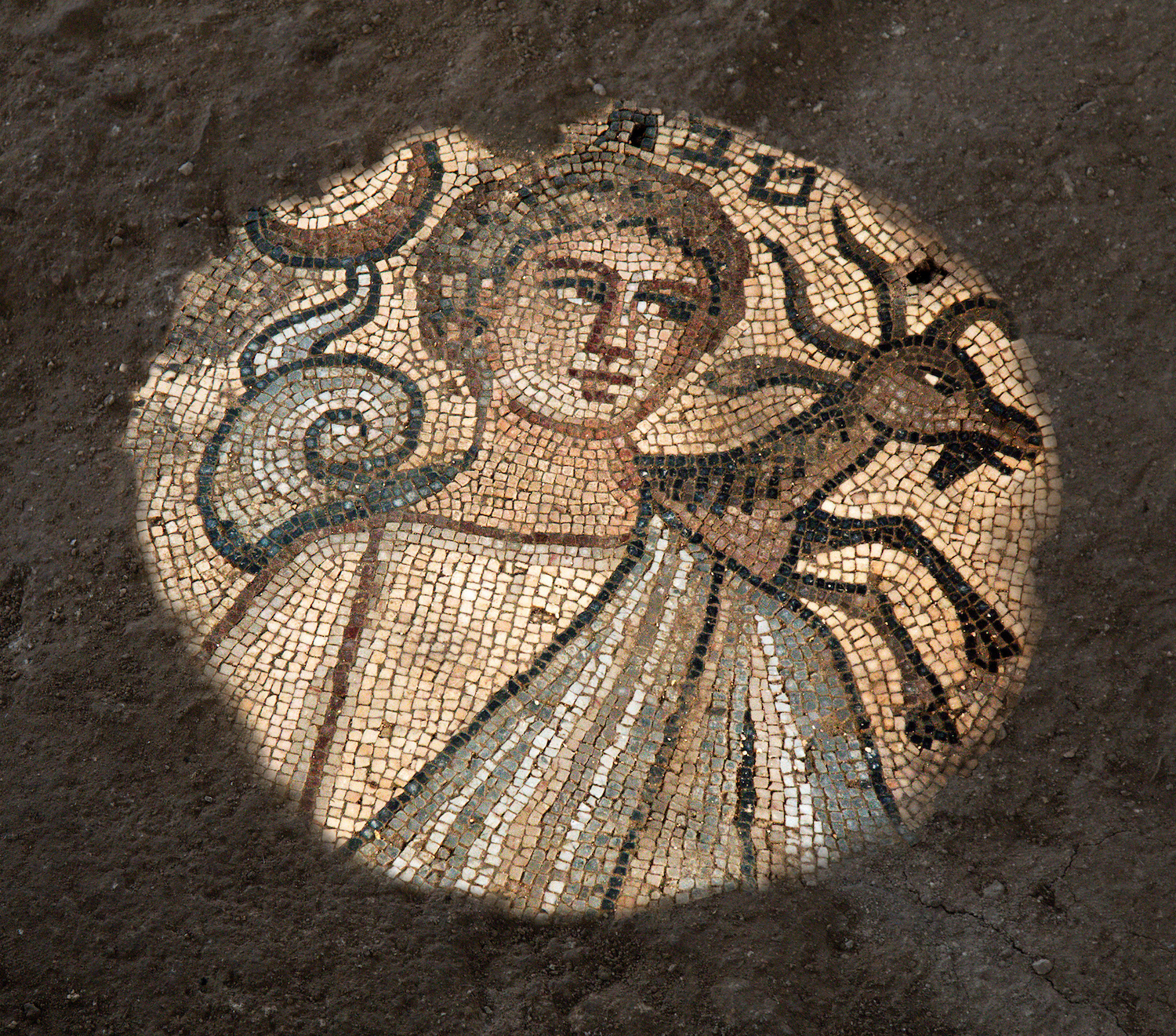1,600-Year-Old Mosaic Shows Biblical Spies Who Scouted Promised Land

An ancient mosaic depicting two Biblical spies sent to scout the Promised Land has been unearthed at a nearly 1,600-year-old synagogue in northern Israel.
In the mosaic, two spies carry a cluster of grapes on a pole — likely a reference to an episode in the Book of Numbers in the Hebrew Bible. In that passage, Moses asks 12 spies, including the famous Biblical hero Joshua, to scout out the land of Canaan. Moses had good reason for sending the reconnaissance mission: He wanted to know many people lived in Canaan, whether the soil there was fertile and what the fruit there tasted like, according to Numbers 13:17-13:23.
The mosaic shows two of those spies just after "they cut off a branch bearing a single cluster of grapes. Two of them carried it on a pole between them, along with some pomegranates and figs," according to the Bible's New International Version translation of Numbers 13:23. [Photos: Unusual Mosaics Decorated Ancient Synagogue in Israel]
The mosaic is one of about a dozen that archaeologists have uncovered at a synagogue in the ancient Jewish village of Huqoq, in Israel's Galilee. The detail and breadth of these discoveries indicate that the villagers flourished during the early fifth century A.D., when the region was under Rome's Christian rule.
"The mosaics decorating the floor of the Huqoq synagogue revolutionize our understanding of Judaism in this period," Jodi Magness, a professor of archaeology at the University of North Carolina at Chapel Hill who led the excavation, said in a statement. "Ancient Jewish art is often thought to be aniconic, or lacking images. But these mosaics, colorful and filled with figured scenes, attest to a rich visual culture as well as to the dynamism and diversity of Judaism in the late Roman and Byzantine periods."

Magness' team began finding the mosaics in 2012. Since then, her group, along with archaeologists from the Israel Antiquities Authority and Tel Aviv University, has uncovered additional mosaics almost every summer. These findings include mosaics in the synagogue depicting biblical scenes, such as Noah's ark, the parting of the Red Sea, the Tower of Babel, and Samson and the foxes, as well as mosaics of elephants, cupidsand even Alexander the Great.
This year, the archaeologists focused on mosaics in the synagogue's north aisle, leading to the discovery of the two spies carrying the grapes, Magness said. Another nearby panel shows a youth leading an animal on a rope; this depiction references Isaiah 11:6, with an inscription reading, "a small child shall lead them."
Sign up for the Live Science daily newsletter now
Get the world’s most fascinating discoveries delivered straight to your inbox.
At the north end of the east aisle, the archaeologists found a fragmentary Hebrew inscription saying, "Amen selah," meaning, "Amen forever."

It isn't uncommon for ancient synagogues from this period to contain biblical art. "What is uncommon is the richness and diversity of the scenes in our synagogue," Magness told Live Science. "There is no other single synagogue in Israel that has so many scenes decorating it. And many of the scenes in our synagogue are not found in any other ancient synagogue."
The mosaics were likely intended to beautify the synagogue, as well as serve an educational purpose, because many people during that time were illiterate, she said.
In essence, "seeing these stories was one way of informing them about the Bible," Magness said. "Some of the prayers and songs that were recited would have related to the scenes that were visible in the mosaics."
The mosaics may have also served a political tactic.
"Jews and Christians were laying claim to the same heritage, both claiming to be the true Israel [at that time]," Magness said. "One way of laying claim to that heritage is to decorate your religious building with scenes like that."
Original article on Live Science.

Laura is the archaeology and Life's Little Mysteries editor at Live Science. She also reports on general science, including paleontology. Her work has appeared in The New York Times, Scholastic, Popular Science and Spectrum, a site on autism research. She has won multiple awards from the Society of Professional Journalists and the Washington Newspaper Publishers Association for her reporting at a weekly newspaper near Seattle. Laura holds a bachelor's degree in English literature and psychology from Washington University in St. Louis and a master's degree in science writing from NYU.









